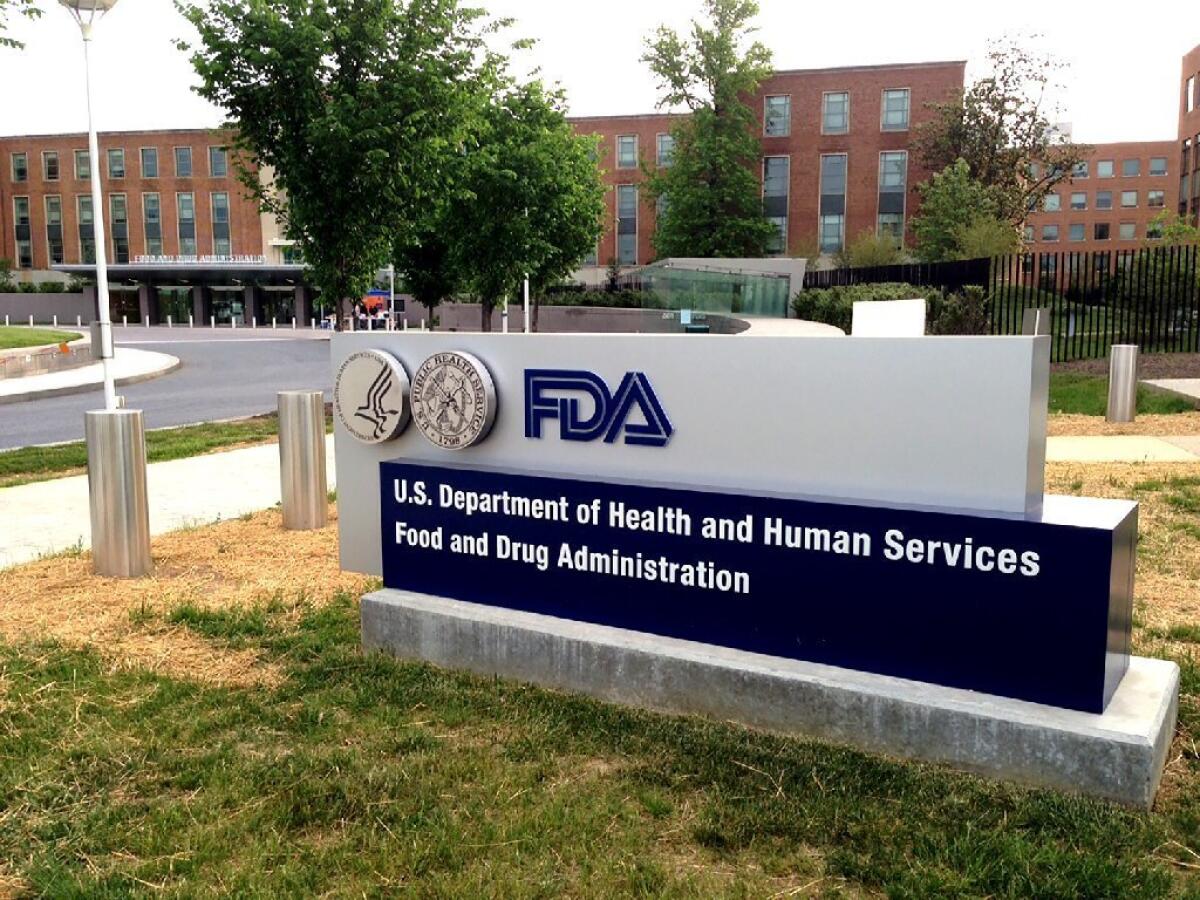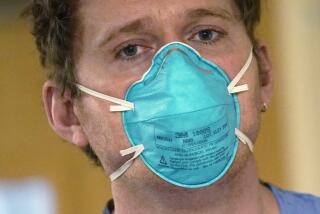Superbug outbreaks: FDA issues more scope-cleaning guidance to hospitals

The U.S. Food and Drug Administration held a two-day hearing in May at its Silver Spring, Md., headquarters about scope-related infection outbreaks.
- Share via
In response to deadly superbug outbreaks, the Food and Drug Administration recommended extra steps that hospitals can take to clean medical scopes while work continues on redesigning the troublesome devices.
The government recommendations published Tuesday don’t offer any new ideas beyond what was already discussed by a federal panel in May examining the spread of antibiotic-resistant bacteria from duodenoscopes.
The FDA warned that even if hospitals take the additional measures it outlined, there is no assurance that the scopes won’t transfer dangerous bacteria to patients.
“The risk of infection transmission cannot be completely eliminated,” the FDA said in its second safety alert since February.
Some medical experts and hospital officials were unimpressed with the FDA’s latest guidance.
“It appears as if mud is being thrown at the wall to see what sticks,” said Lawrence Muscarella, a hospital safety consultant in Montgomeryville, Pa.
Dr. Zachary Rubin, who investigated an outbreak at UCLA’s Ronald Reagan Medical Center and testified before the FDA panel in May, said, “Until hospitals are given more specific guidance by the FDA and manufacturers, I still think the problem will persist.”
The FDA said it continues to investigate the scope infections and monitor injury reports submitted by medical providers and manufacturers.
Work is also underway on redesigning these duodenoscopes so they are easier to clean and safer to reuse.
Jennifer Dooren, an agency spokeswoman, said the FDA is “working with manufacturers as they explore design innovations” such as disposable parts for the hardest-to-clean areas or devices that could be disassembled.
The tip of these intricate instruments has proved to be the most difficult part to clean. Infections have occurred because dangerous bacteria became trapped around an elevator channel that holds guide wires and catheters.
Some of the additional steps put forward Tuesday include sterilizing the duodenoscopes with a toxic gas or quarantining scopes between reuse to see if bacteria grows. Those steps would be done in addition to a manufacturer’s recommended cleaning instructions.
Duodenoscopes are used in a procedure known as ERCP, or endoscopic retrograde cholangiopancreatography.
During the procedure, a flexible scope is put down a patient’s throat to diagnose and treat problems in the digestive tract such as cancers, gallstones and blockages in the bile duct. Nearly 700,000 such procedures are performed annually in the U.S.
The FDA reiterated that duodenoscopes should remain on the market because “for most patients the benefits of ERCP outweigh the risks of infection.”
Some hospitals have already adopted some of the FDA’s recommended steps.
UCLA, for instance, added sterilization with ethylene oxide gas after contaminated scopes sickened eight patients, including three who died from the CRE superbug.
But officials at UCLA and other hospitals agree gas sterilization has serious drawbacks, including high cost, lack of availability in many areas and the potential damage it can do to the scopes themselves.
The FDA acknowledged those concerns, saying the recommended measures “may not be feasible in all healthcare facilities and each of these options comes with its own benefits and limitations.”
In addition to culturing and gas sterilization, the FDA recommended a liquid chemical sterilant or repeating the current protocol of high-level disinfection.
The standard approach has been to clean scopes by hand before running them through an automated reprocessing machine for disinfection.
The FDA, which regulates medical devices, has been sharply criticized by lawmakers and patient advocates for not warning hospitals sooner about the well-documented threat of scope-related infections.
Muscarella, the endoscopy consultant, said he didn’t understand why health officials failed to address the risk posed by other types of medical scopes in Tuesday’s report.
At the FDA meeting in May, several experts on the panel and researchers pointed out that other devices, such as bronchoscopes and gastroscopes, can have traces of potentially infectious material even after cleaning.
A spokeswoman said the FDA “continues to investigate infections associated with other reprocessed reusable devices and will provide updates as appropriate.”
The U.S. Justice Department has sent subpoenas to Olympus Corp. and two other scope makers in connection with the recent outbreaks.
Olympus, which controls 85% of the specialty endoscope market in the U.S., and its devices have been linked to six of the nine recent superbug outbreaks, including at UCLA.
In March, Olympus issued revised cleaning instructions to hospitals and recommended a new brush for the elevator area.
The company has emphasized that the design of its product isn’t the sole cause for infections. Hospital workers are prone to make mistakes or skip important steps during the cleaning process, according to Olympus.
Twitter: @chadterhune, @melodypetersen
More to Read
Inside the business of entertainment
The Wide Shot brings you news, analysis and insights on everything from streaming wars to production — and what it all means for the future.
You may occasionally receive promotional content from the Los Angeles Times.











